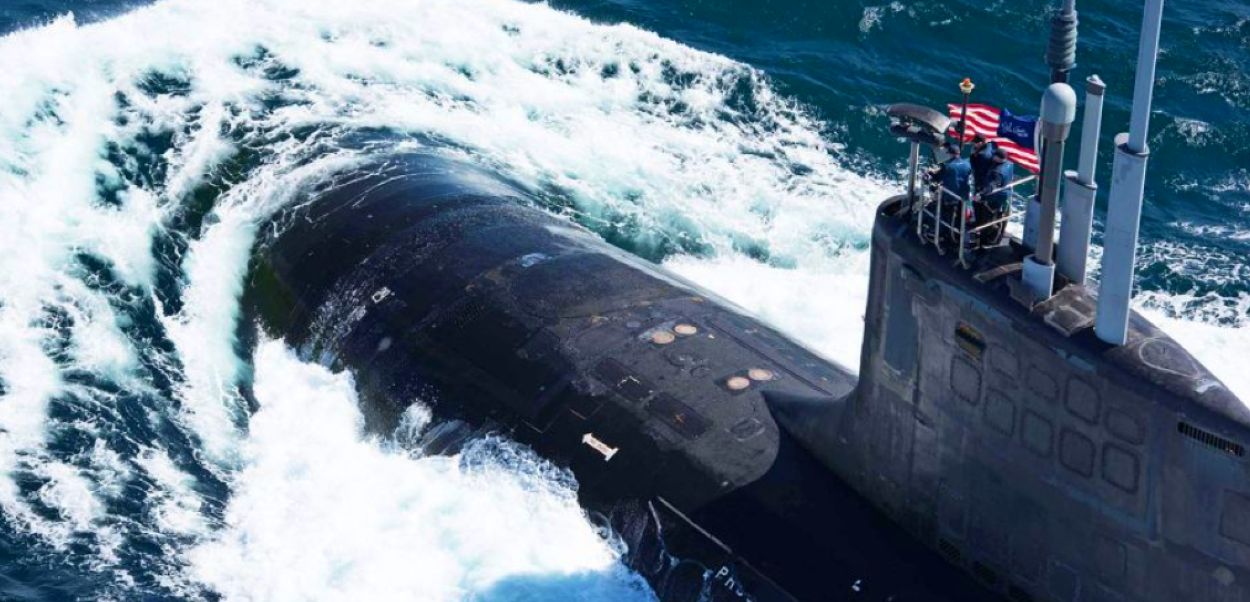The Australian Labour government is taking the two-day Australian Labour Party’s triennial conference as an opportunity to assuage the domestic anxiety over the AUKUS military pact for nuclear-powered conventionally armed submarines (SSNs).
There have been concerns among the rank and file of the party regarding the domestic jobs the deal will jeopardize or dispose of the spent nuclear waste generated and nuclear reactor.
This conference comes close to the first batch of Australian Navy personnel graduating from the US Nuclear Power School in July 2023.
Introducing them to the public, the Australian Submarine Agency said: “Lieutenant Commander Heydon is one of the first Australians to graduate Nuclear Power School in the United States, where he will become one of the first Australians to operate a nuclear reactor on a conventionally-armed, nuclear-powered submarine.”
In November, the three officers entered one of the military’s most challenging training programs. They are now on their way to training at the Navy’s Nuclear Prototype Training Unit, followed by the submarine introductory officer course in 2024. They will then be assigned to a Virginia-class sub to continue training and qualifications. The Australian Navy will receive the first Virginia Class submarine in the early 2030s.
“They operate in a foreign environment where the basic human requirements for life (like the air we breathe) are carefully monitored and controlled on board. The introduction of naval nuclear-powered propulsion demands even more rigor and technical application. I am incredibly excited for the opportunities it will bring to those studying – our future leaders, scientists, technicians, and engineers,” Lieutenant Commander Heydon added.
Australia needs to up the number of submariners being trained as the nuclear-powered submarines need a large crew to operate, and they need to gain experience to handle the reactor onboard.
Retired submariner and senior fellow at Washington-based think tank the Hudson Institute, Bryan Clark, underscored the difficulty in getting the required number of people to man its nuclear-powered submarines. Virginia-class submarines carry around 132 people, nearly three times the size of the crew onboard the Collins-class boats Australia has now.

The nuclear reactors in the planned AUKUS submarines will use US/UK designs fuelled by highly enriched uranium and will not need to be refueled for the lives of the vessels.
Domestic Anxiety Over AUKUS Reaches Crescendo
The Department of Defense has been asked to investigate potential sites for nuclear waste disposal on defense-owned land and will report back to the government on options.
The South China Morning Post (SCMP), owned by Alibaba, quoted Labor Against War acknowledging that the 50 branches – out of hundreds – is just a start and saying, “it is inappropriate to endorse AUKUS given its problematic features.”
“There are so many things wrong with Aukus … putting Australia on a ‘war footing’ with our main trading partner just makes no sense,” said Marcus Strom, a spokesman for Labor Against War and a former press secretary for the Albanese government.
He said Aukus is seen as “crossing a line on nuclear power that has been at the heart of Labor principle” and would “create a loophole in the nuclear non-proliferation treaty [in force since 1970] for non-nuclear-armed countries to access weapons-grade uranium”. The government admits it has no solution for nuclear waste, he added.
Under the agreement announced in March, the Aussies will acquire multiple SSNs from the US and the UK to counter the rise of China in the West Pacific.
Australia’s nuclear submarine program will cost US$368 billion over the next three decades, making it the largest single Australian defense project in history.
The price sparked significant outrage within the country. Australia will buy at least three American manufacturer nuclear submarines, contributing significantly to the US Shipyards.
In the early part of the next decade, the Australian government will acquire three Virginia-class submarines, possibly used ones. This decision is subject to US Congress approval. The historic AUKUS defense and security contract will also reportedly include an option to buy two more.
According to the latest plan forged by the AUKUS allies, the British work to replace their Astute-class submarines will be “leveraged” to continue design and development work on a brand-new submarine known as the SSN-AUKUS.
That submarine, which will eventually be operated by the UK and Australia employing US combat systems, will be referred to as the AUKUS class. From the early 2040s through the late 2050s, one submarine will be manufactured every two years, and the Royal Australian Navy will get five SSN-AUKUS boats by the mid-2050s.
With both countries operating Virginia class submarines, they will also use many of the same weapons, like the Tomahawk cruise missile, and mission systems, including networking capabilities, that will further enhance interoperability.
Eight Australian submarines built in Adelaide would eventually make up the fleet until the 2060s. The pact comes as the current power balance in the South Pacific is being altered with China entering a security agreement with the Solomon Islands, just 2,000 kilometers from the Australian mainland.
China has been courting Australia, and naysayers fear that the AUKUS pact could unsettle the region’s security and start an arms race.
- Ritu Sharma has been a journalist for over a decade, writing on defense, foreign affairs, and nuclear technology.
- She can be reached at ritu.sharma (at) mail.com